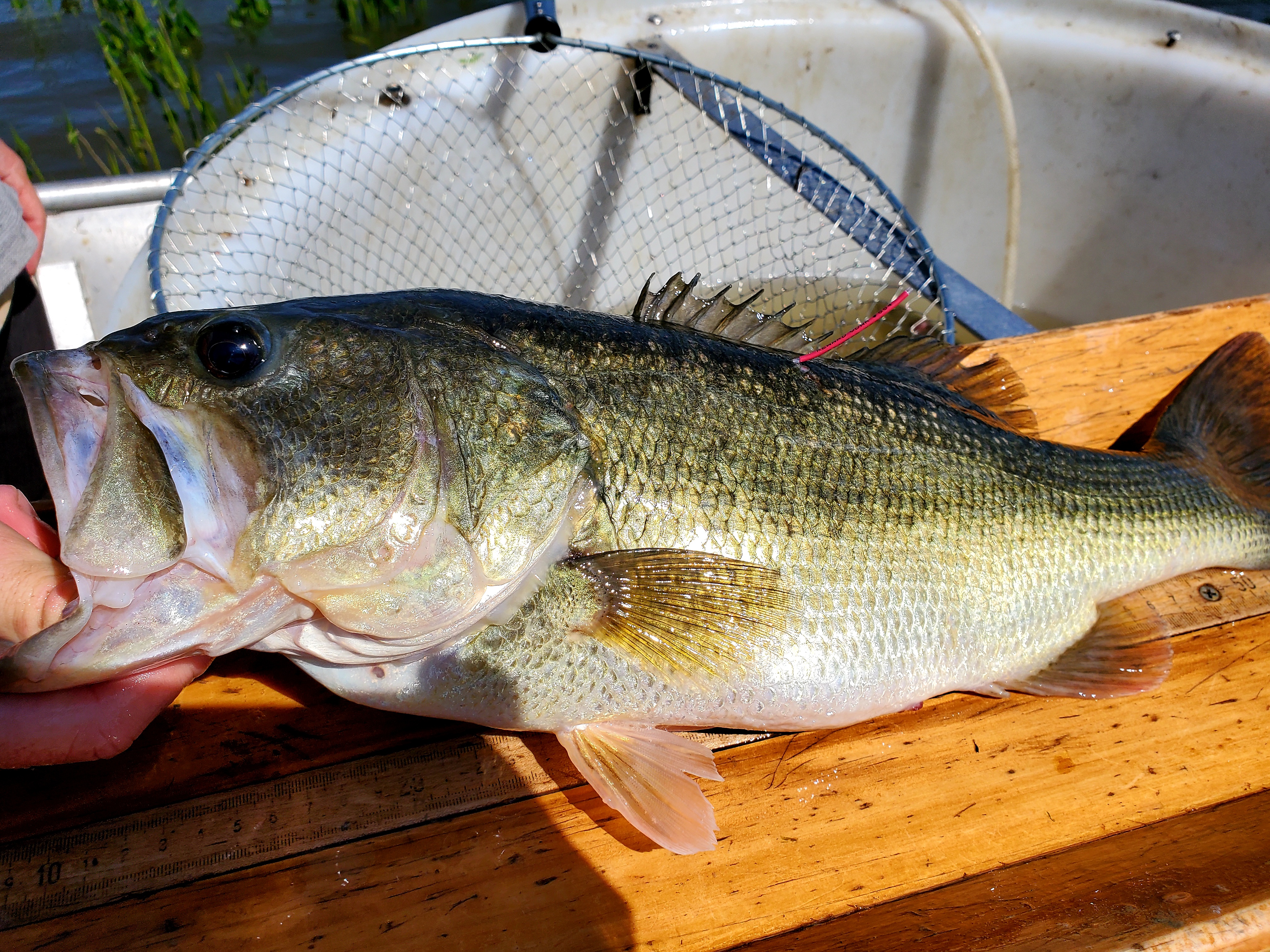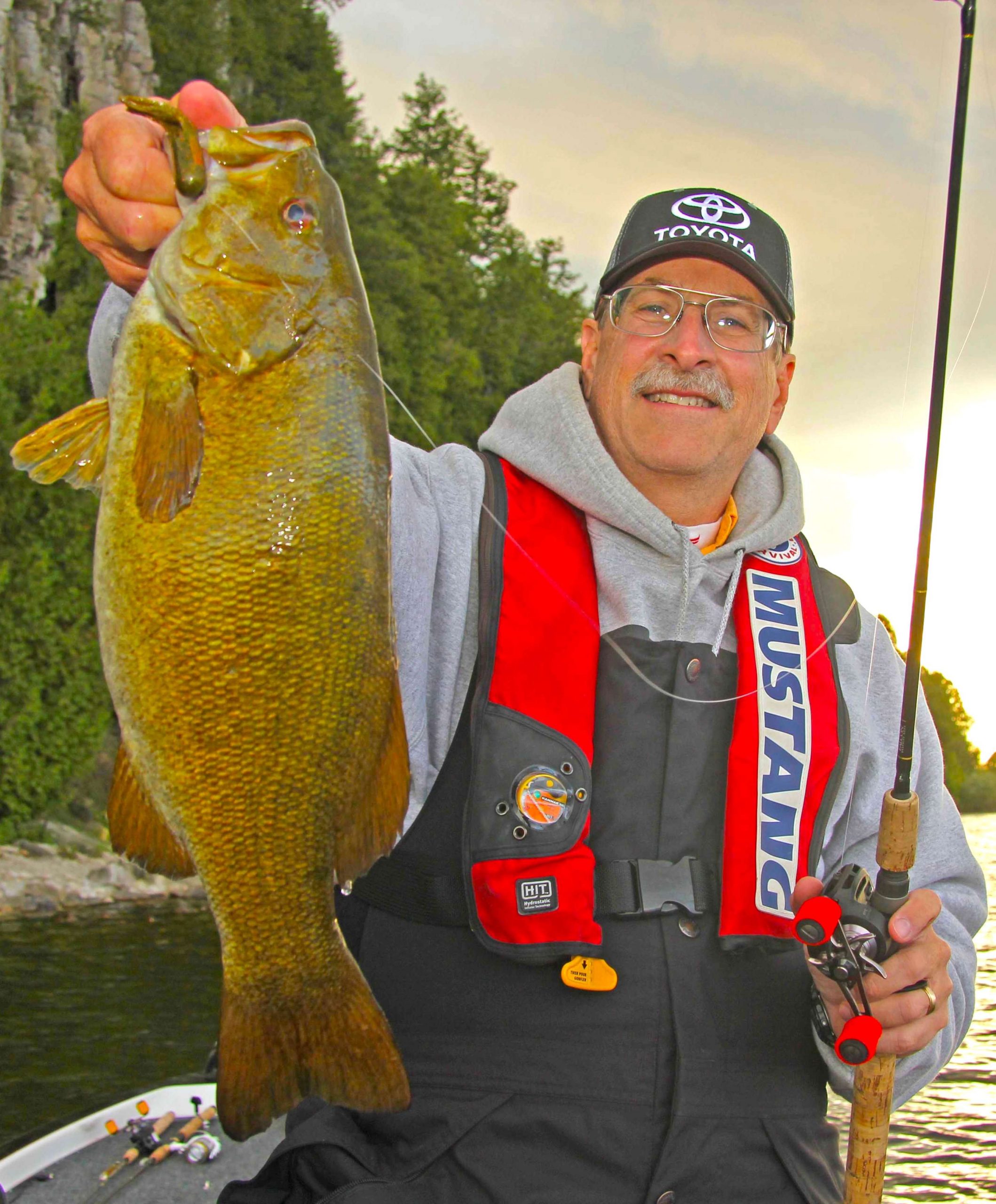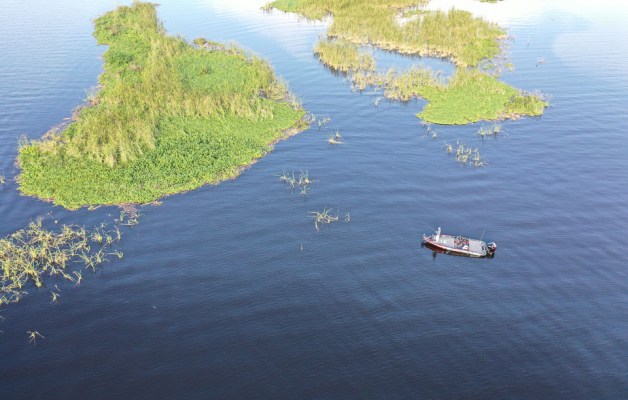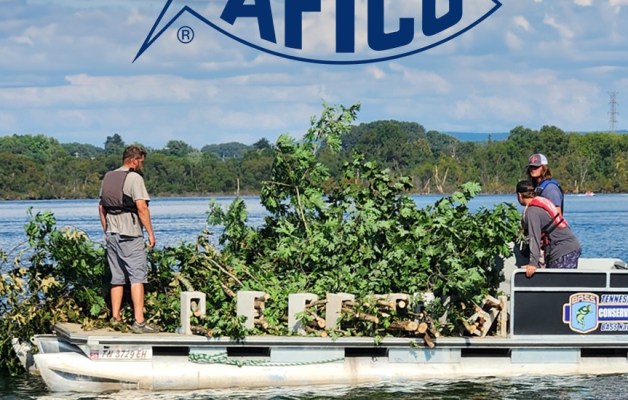
by Margaret Whitmore, Virginia Dept. Wildlife Resources
The James and Chickahominy Rivers boast strong largemouth bass fisheries that attract anglers from across the country and host tournaments of varying sizes. Large tournaments typically launch from the James River, which itself offers excellent bass fishing and connects anglers with adjoining waters such as the Chickahominy River. Because of the Chickahominy’s reputation as a productive fishery, many anglers travel between the Chickahominy and James rivers to fish.
During 2020, invasive Alabama bass were detected in Diascund Creek, a tributary of the Chickahominy River. Additional detections of Alabama bass have been reported in the Chickahominy River. In April 2021, the Virginia Department of Wildlife Resources (DWR) began a largemouth bass tagging project to assess fish movement between the James and Chickahominy Rivers.
The goals of the project were to estimate translocation between rivers, assess the impact of translocation on the Chickahominy River bass population, evaluate invasive Alabama bass dispersal vectors and understand fish distribution post-release by anglers. This in turn would inform DWR management decisions, such as if and when stocking may be required to maintain the quality of the largemouth bass fishery and identifying areas for Alabama bass monitoring.
The DWR tagged 648 preferred-size (greater than 12-inch) largemouth bass throughout the Chickahominy River with red dart tags and monitored movement via angler reports and partnerships with B.A.S.S. and The Bass Federation to identify tagged fish at tournament weigh-ins.
Over the past year, DWR Biologists were able to determine that largemouth bass movement between the James and Chickahominy Rivers is largely driven by tournaments. This is because non-tournament anglers targeting Chickahominy River bass overwhelmingly launch from and stay within the Chickahominy River. Despite this pattern, biologists found only 3.4% of largemouth bass were moved from the Chickahominy to the James River as part of large tournaments. Non-tournament anglers were responsible for 0.3% of observed translocation to the James River.
Additionally, reported tagged bass released in the James River by anglers were later reported as being caught in the Chickahominy River. Because of the long distance (more than 35 miles), it is likely that these fish were translocated by anglers; however, this indicates movement in both directions between the two rivers.
Biologists also used data from a creel surveys and field sampling to estimate the abundance of preferred-size bass (greater than 12 inches) in the Chickahominy River and estimate the percentage of fish that are vulnerable to being caught and moved to the James River by anglers throughout the year. Overall, 12.5% of preferred-size largemouth bass were considered vulnerable to being moved from the Chickahominy to the James River by anglers.
It is important to note that the 12.5% of vulnerable bass reflects the percentage fish that are at-risk of being caught and translocated and represents an estimate of the maximum percentage of translocations. The observed percentage of bass translocated from the Chickahominy River to the James was 3.7% over the course of a year. Translocations by tournament and non-tournament anglers are very low relative to the size of the bass population and are not expected to negatively impact the Chickahominy largemouth bass population.
The DWR is continuing to collect reports of tagged fish to track movement in the James and Chickahominy Rivers. Please report any tagged bass you catch to the phone number on the tag (804) 829-6580. Be sure to make note of the three-digit identification number on the tag and where and when the fish was caught. Anglers receive a $5 reward for every tag report.
If anglers suspect that they have caught an Alabama bass, they should clip a thumbnail size portion of the pelvic fin and store dry in an envelope before emailing a photo of the fish and information on where it was caught to fisheries@dwr.virginia.gov. For additional information on Alabama bass and identification visit the Alabama bass page on the DWR website.





